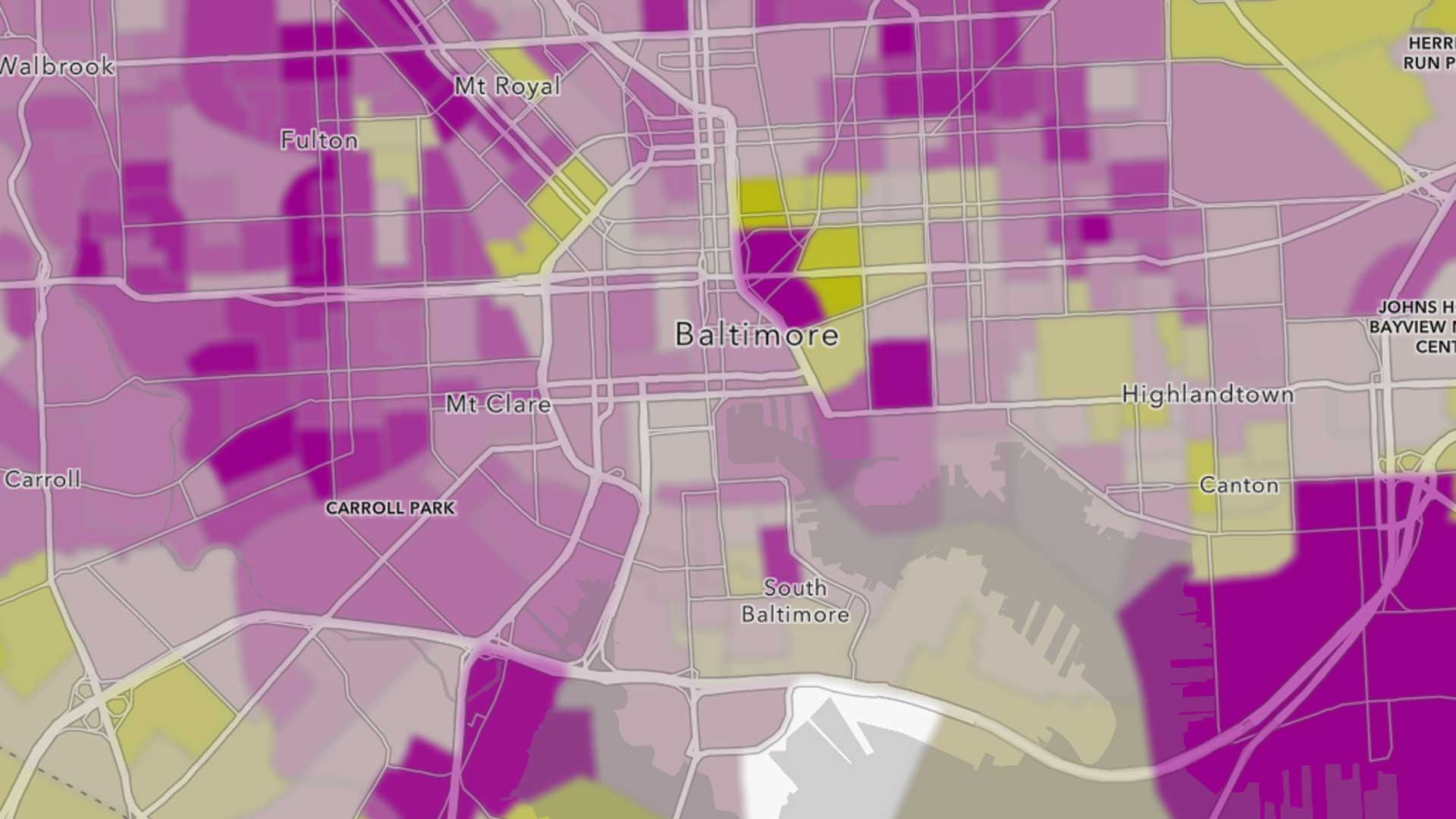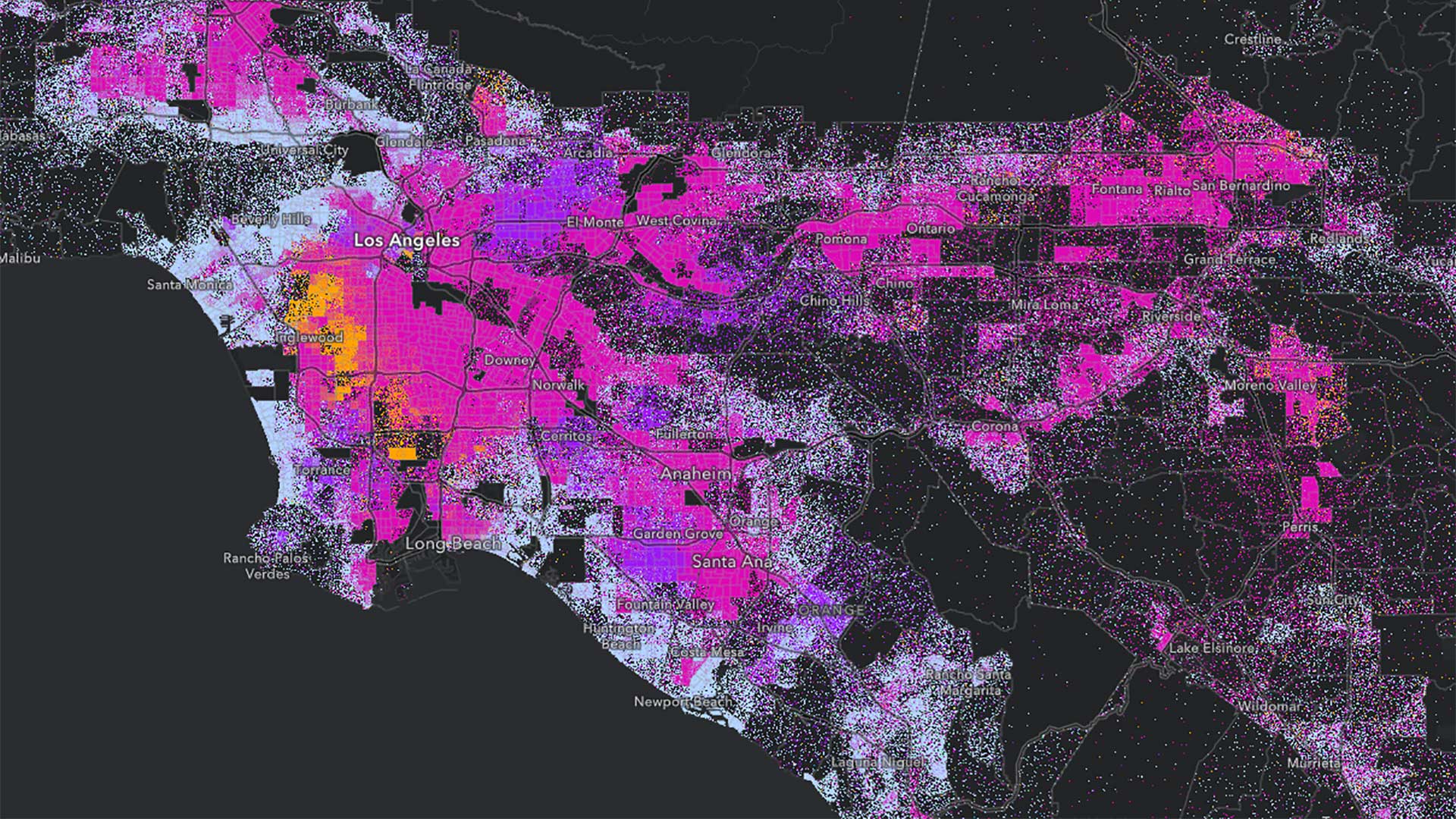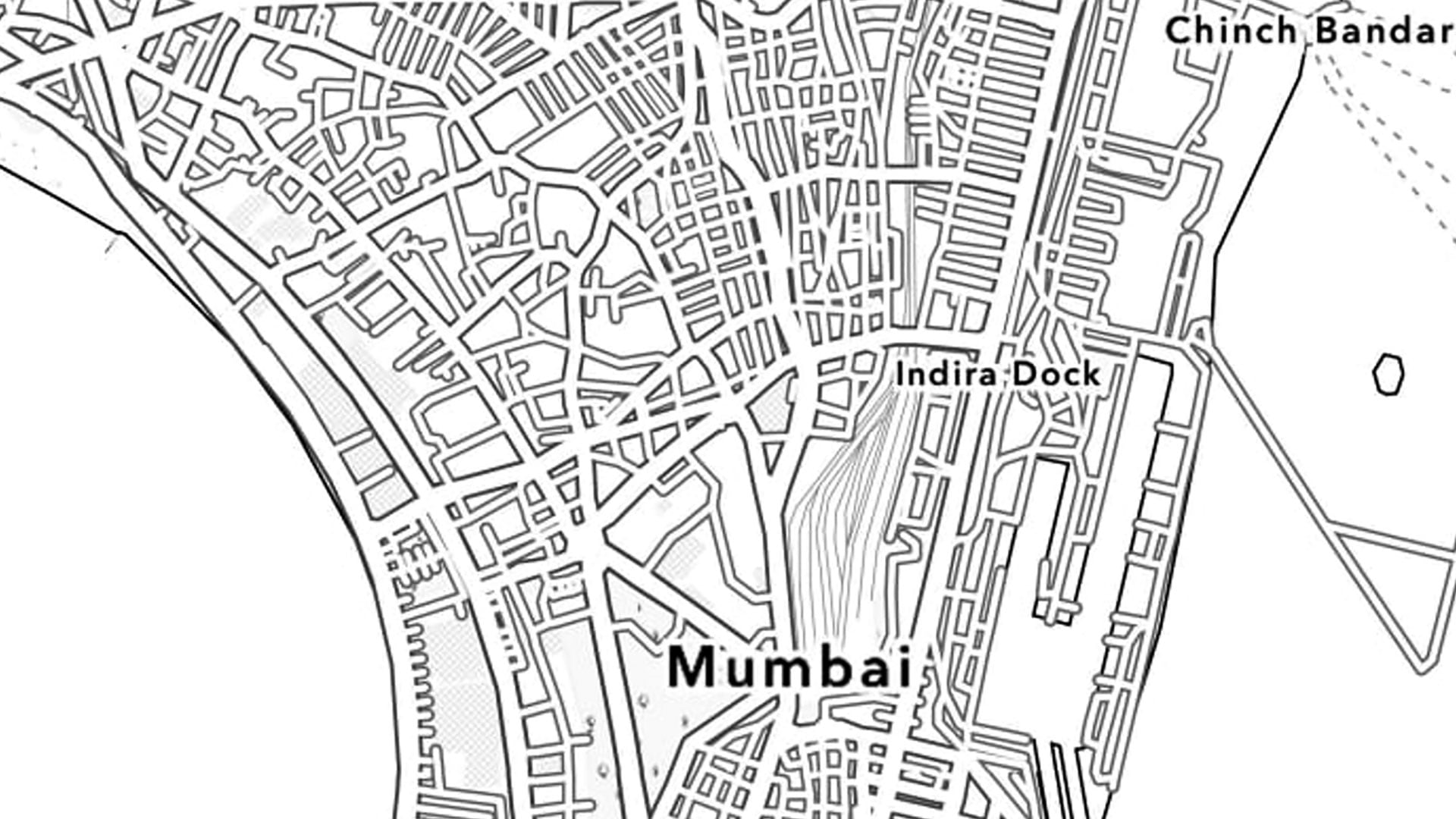Defining boundaries is a popular use case for GIS.
These boundaries go by many names: service areas, sales territories, attendance areas, caseloads, wards, legislative districts. This article will walk you through a simple workflow designing areas in the state of Virginia to serve the veteran population. To follow along, start a new project and a blank map in ArcGIS Pro.
1. Add Layers from ArcGIS Living Atlas of the World
First, you need some baseline data about where veterans live. The US Census Bureau does an excellent job maintaining data about this important topic. Fortunately, ArcGIS Living Atlas has many preconfigured layers containing data from the US Census Bureau to get you started. You’ll add one of these layers to your map.
From the Map tab, click the top half of the Add Data button to bring up a dialogue window. In the window that appears, under Portal, click Living Atlas, and type “veterans” into the search bar. Click the first item in the search results, the layer named ACS Veteran Status Variables–Boundaries (www.arcgis.com/home/item.html?id=891153ed7a4c4e978b2ca63ad7fb2435) to add it to your map.
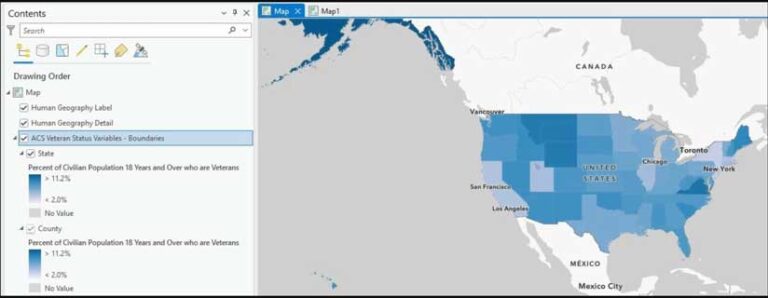
2. Explore the Spatial Data
This is a multiscale layer containing data for three levels of geography: state, county, and census tract. It has visible scale ranges set so that appropriate geography levels are shown and hidden as users zoom in and out. Zoom out to see data at the state level. Then zoom in to see data at the county level. Zoom in further to see the data at the tract level.
This layer is also symbolized to show the percent of the adult population with veteran status. Darker blue areas have a higher percentage of adults who have formerly served in the US military. Notice that the state of Virginia is one of the darker blue states, indicating a large percentage of veterans.
On the Map ribbon, switch the basemap to Human Geography or Light Gray Canvas. These neutral basemaps help to make your map easier to read, since they don’t compete visually with your thematic data. The Human Geography basemap also places city/state labels on top.
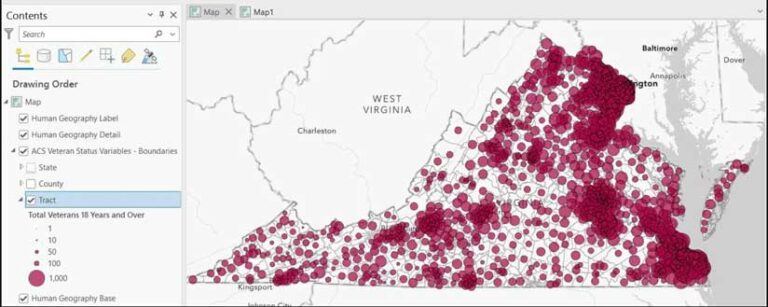
3. Use a Definition Query to Show Only Virginia Tracts
Zoom to display Virginia in your map. To design your service areas, you will want to start with the most granular level of geography. In this case, the finest level of geography is tracts. Turn off the State and County layers by unchecking them in the Contents pane. Now filter all the tracts in the US to show only those in the state of Virginia. In the Contents pane, right-click Tract and click Properties. Add a definition query that reads “Where State is equal to Virginia.”
Before closing the Layer Properties window, click the General tab and choose the Show layer at all scales option. This will always show tracts no matter the zoom level. The map now only shows tracts for Virginia.

4. Symbolize by Count Rather Than Percent
To design service areas, you will work with the count of individual veterans. By default, the layer is symbolized by the percent, but you can modify this. Right-click on the Tract layer in the Contents pane and click Symbology. The Symbology pane appears. It shows that the layer is currently symbolized with the Unclassed Colors method and a percentage field. The unclassed colors symbology method is a great way to display percentages and rates, but not so great for showing counts. Change the Primary symbology to Proportional Symbols. This type of symbology uses size rather than color, which is more intuitive for depicting differences in counts.
Change the field to symbolize to Total Veterans 18 Years and Over. The symbols on the map are currently too large and crowded. You will adjust the symbology settings to get a clearer visualization. The goal is to see where veteran counts are high and low. Change the minimum size to 1 pt and see the symbols get smaller.
Next to Template, right-click the circle symbol and click Color Properties. In the Color Editor window, increase the transparency to 30 percent. Changing the transparency helps reveal overlapping symbols that represent where data values are large. This visualization shows large groups of veterans around Norfolk and Arlington.
In the Contents pane, the legend shows that each symbol represents between 1 and 1,000 veterans. In the Symbology pane, the histogram shows that the minimum value is 3. This means that there’s a tract somewhere in Virginia with only three veterans. On the other side of the distribution, the maximum value is 1,642, so there’s also a tract with 1,642 veterans. Note: This layer is updated every year, so exact counts may vary.
Now that you understand how Virginia’s veteran population is distributed across space, you can use two geoprocessing tools in this workflow—Build Balanced Zones and Dissolve—to perform analysis.
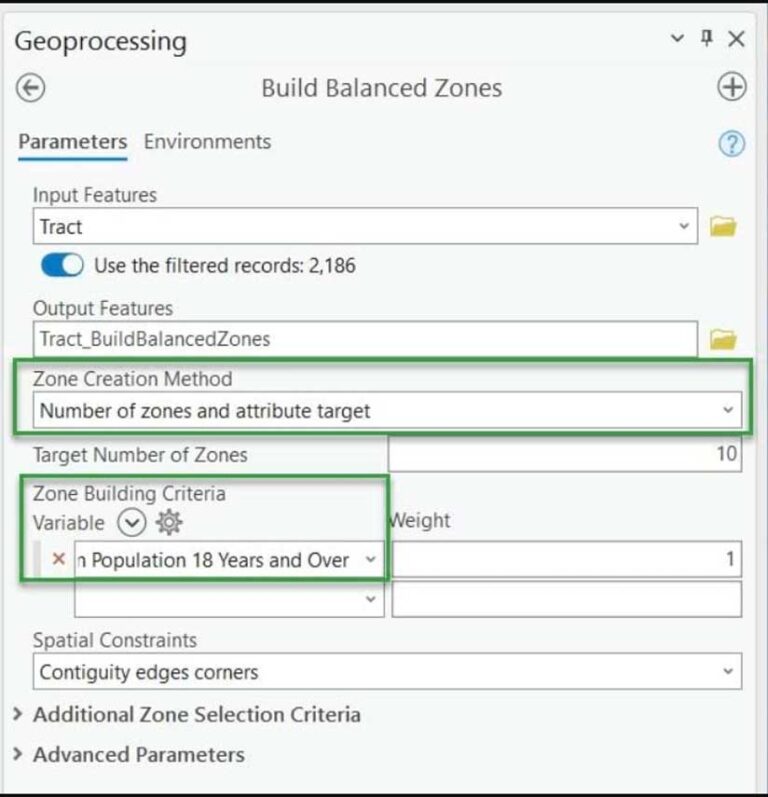
5. Set Parameters and Run the Build Balanced Zones Tool
From the Analysis ribbon, click Tools. This will open the Geoprocessing pane. Search for and open the Build Balanced Zones tool. Set the Input Features to the Tract layer. Make sure that Use the filtered records: 2,186 is toggled on so that the tool runs on tracts in Virginia, rather than all tracts in the entire US.
Point to Zone Creation Method and click the i button that appears next to it. Read the detailed information about this parameter in the window that appears. Here’s where you input whether you want an attribute target (e.g., as balanced as possible for a specific attribute), or a defined number of zones (e.g., 10 zones and only 10 zones), or both. The defined number of zones option is helpful when you have a fixed number of resources, such as regional directors, campuses, or field offices. For this exercise, change the drop-down option to Number of zones and attribute target. For Target Number of Zones, type in 10.
The Zone Building Criteria is where you’ll tell the tool which attribute(s) you want it to consider. In the drop-down under Variable, select Total Veterans 18 Years and Over. The tool will now generate zones that are balanced with respect to the sum of veterans from all the tracts. The result should be 10 zones containing roughly equal numbers of veterans. Click Run. This operation should take a few minutes.
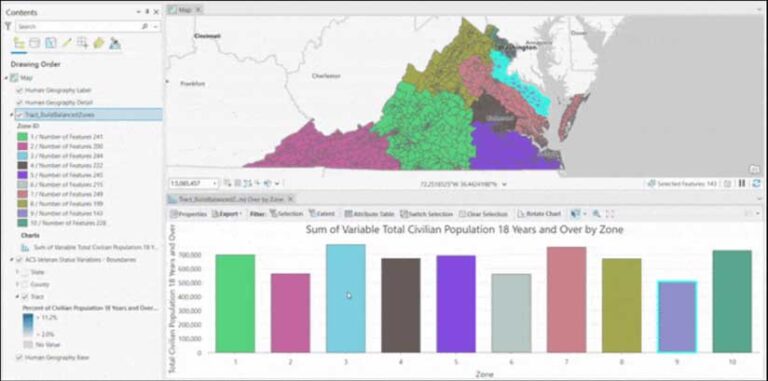
6. Examine Output
This tool will complete with warnings. Click View Details. These details are the messages that you would get in a log file if you were running this programmatically. The main message is that some zones are disconnected groups and not contiguous. That is okay. Virginia contains some island and peninsula areas. You will have output that you can evaluate.
Note: It’s possible you could get 10 zones that look a little different than the output shown. It’s also possible that it could complete with a warning and results containing 9 or 11 zones.
Let’s look at the output. A layer and two charts were added to the map. Turn off the Tract layer so that the Tract_BuildBalancedZones layer can be seen more clearly. Open the first chart whose title starts with Sum of Variable.
Because this tool is run using a random seed, the results will be slightly different each time. In the example illustrated, there are 10 zones, and the sum of veterans ranges from 508,630 in Zone 9 to 771,260 in Zone 3. The number of tracts in each is listed in the Contents pane. For example, Zone 2 contains 200 tracts.
Turn the Tract layer back on and explore the map. Notice that the smaller zones (near Norfolk and Arlington) have the largest groups of proportional symbols. There are more veterans in these areas than in other places within the state. The tool has generated zones based on the veteran population, while at the same time keeping the zones as contiguous as possible.
In the Contents pane, right-click Tract_BuildBalancedZones and click Attribute Table. There are 2,186 tracts in this layer. A field called Zone ID assigns each of them a value of 1 through 9.
Optional: Fine-Tune Your Zones
Experiment with different parameters in the Build Balanced Zones tool and rerun the tool. You can see that some zones are not compact—they are elongated and stretched out. Zones that are more compact can help with canvassing, improve drive times, and aid in administration. If you want, run the tool again and choose the zone selection criteria for compactness.
There are many more options available with this tool, particularly the spatial constraints. Read the ArcGIS Pro help for more information (links.esri.com/BBT). Feel free to fine-tune your zones as much as you’d like.
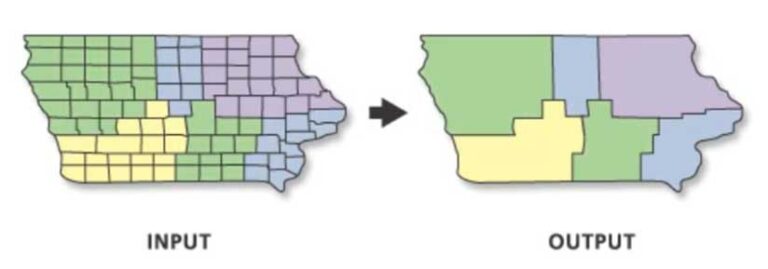
7. Dissolve the Zones into New Polygons
Your final desired output is a new polygon layer of balanced service areas. In this case, you will end up with a layer containing nine polygons. In the Geoprocessing pane, click the Back arrow. If you closed the Geoprocessing pane, click Tools on the Analysis ribbon to reopen it. Search for and open the Dissolve tool. This will dissolve the 2,186 tract polygons into 10 zone polygons.
Set the Input Features to your finalized results from the previous step, Tract_BuildBalancedZones. For Dissolve Fields, choose Zone ID. The tool will create output polygons that group together input polygons based on their Zone ID values.
Finally, set the Statistics Fields. We want the the output layer to include a field that shows the total number of veterans in each zone. To achieve this, set Field to Total Veterans 18 Years and Over and set Statistics Type to Sum. Click Run. This analysis runs in a few seconds. The result is a layer with 10 polygons, and a field named SUM_B21001_002E that stores the total veteran population for each.

Take It Further
You have used ArcGIS Living Atlas content and geoprocessing tools in ArcGIS Pro to design custom service areas. From here, there are endless possibilities. With this knowledge, you could create a map series of reference maps of each zone using highways and county boundaries layers with the Human Geography basemap. Then, export and publish a feature layer of these zones to ArcGIS Online and share it within your organization. You could combine this layer with your organization’s data on the locations of facilities, assets, and places of interest. You could also enrich this layer to bring in even more demographic, consumer spending, or psychographic data specific to your cause or your business needs. Finally, you could create infographics using ArcGIS Business Analyst.
